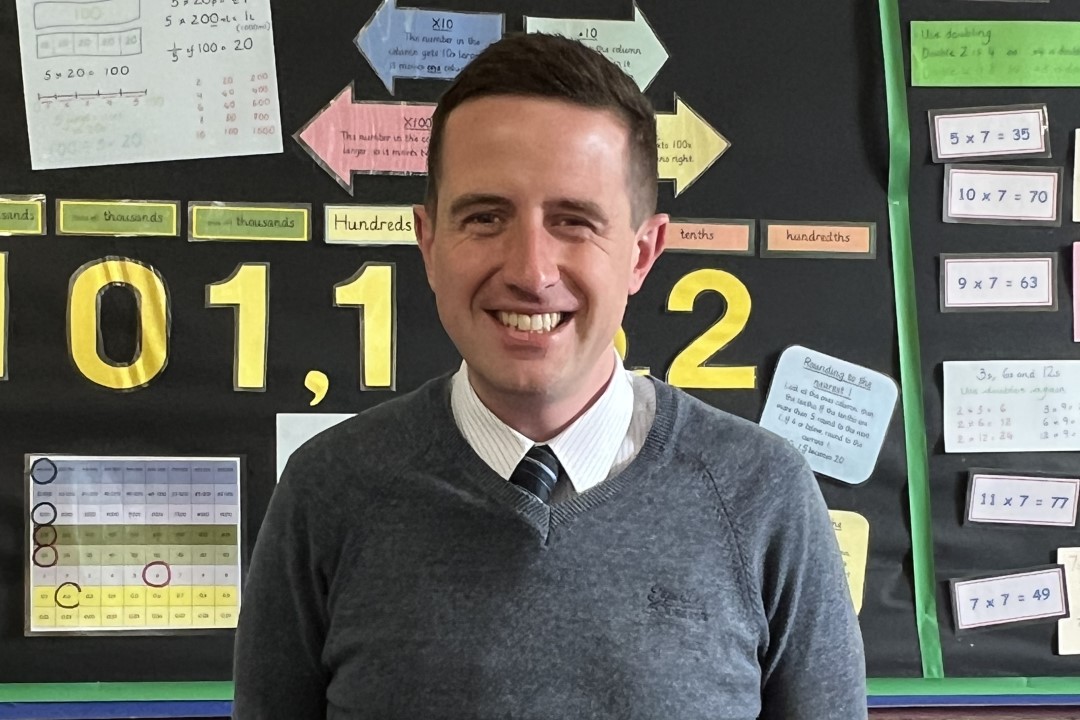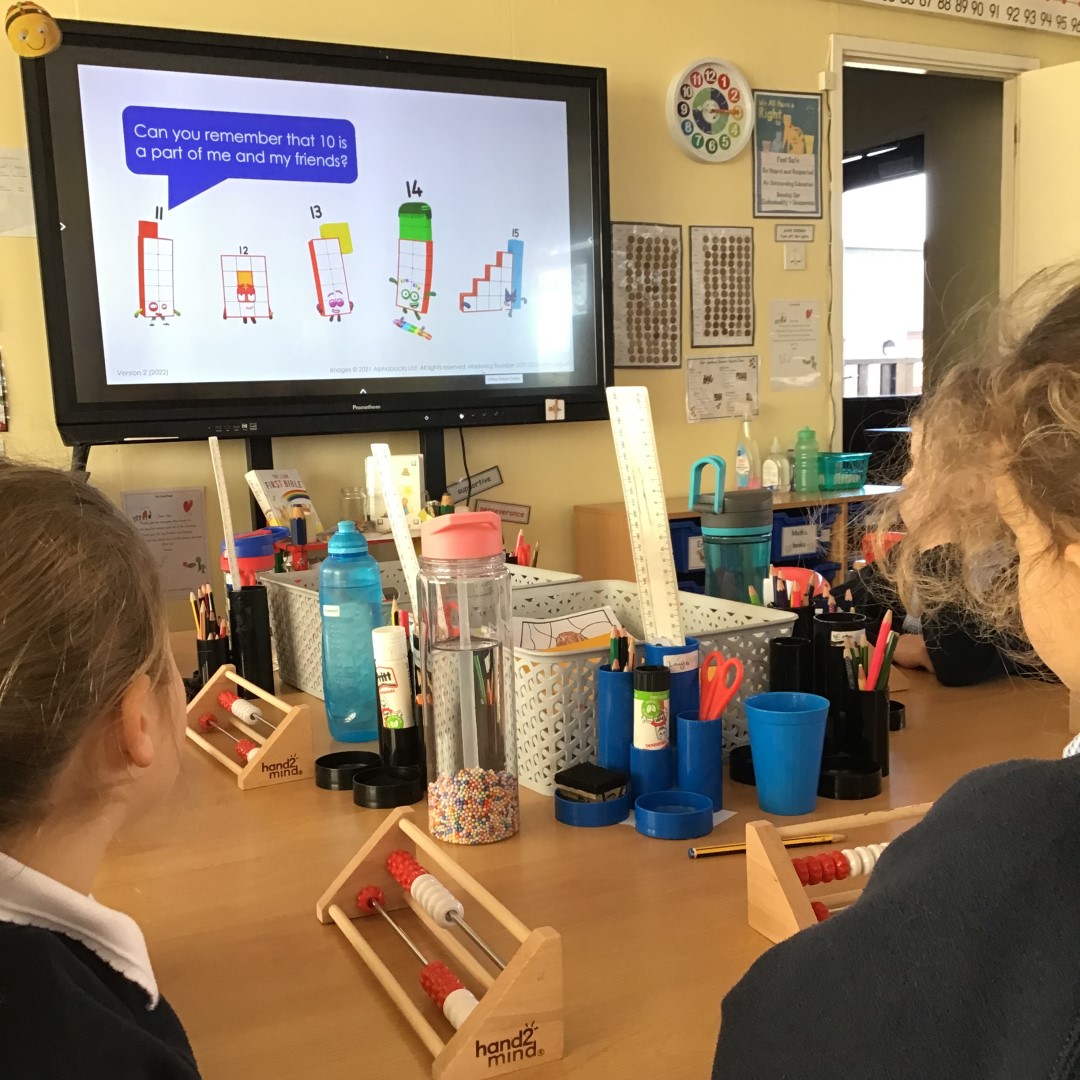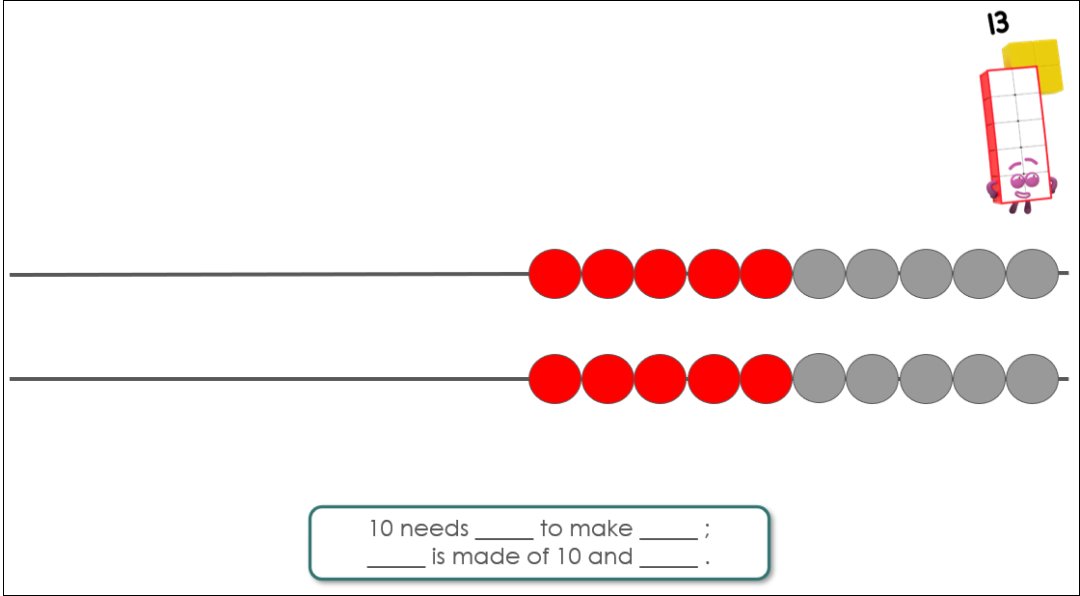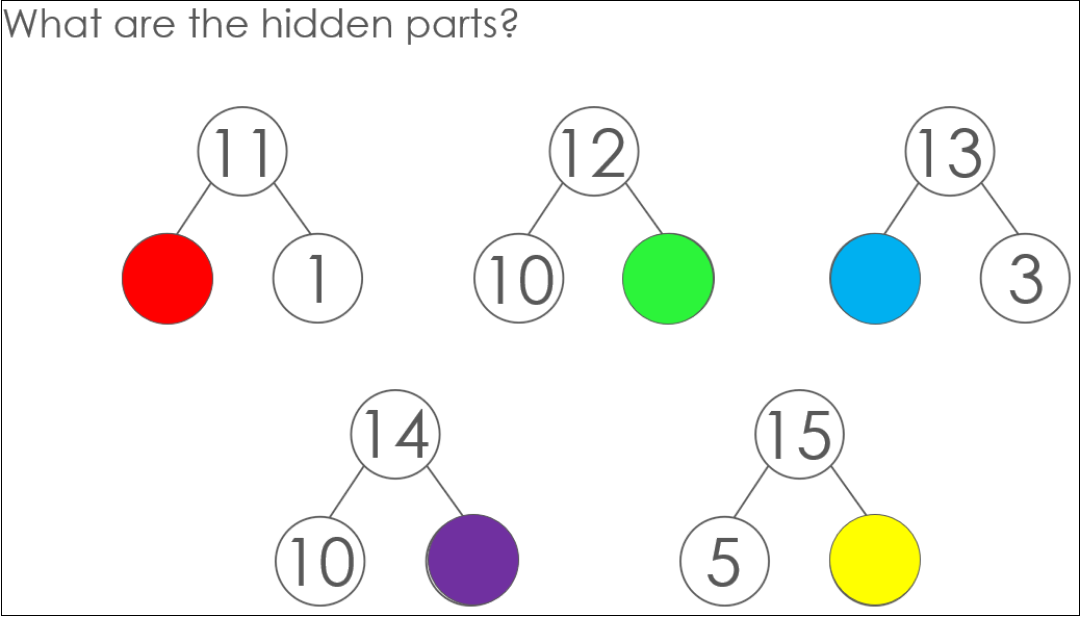'They can see it straight away': the impact of Mastering Number
Successful implementation of Mastering Number has brought huge benefits to pupils in a mixed-age class
22/05/2023
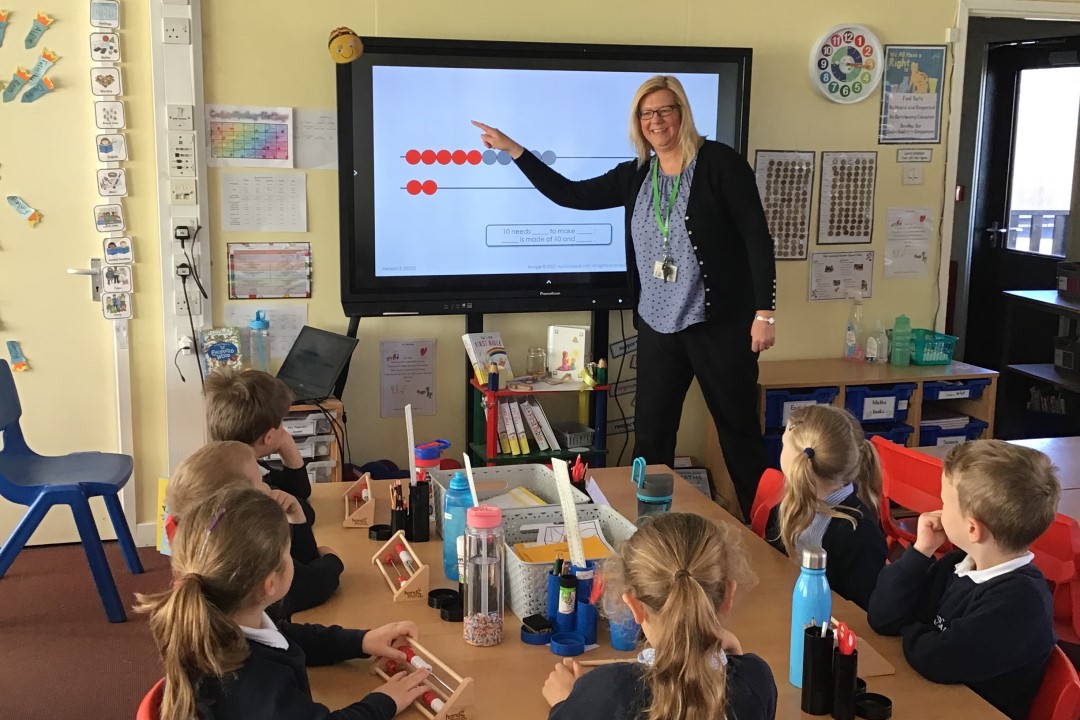
When Michael Hares, Assistant Headteacher and maths subject leader at Whixall C of E Primary School in Shropshire, heard about Mastering Number in 2021, he had no hesitation in his school joining the programme. As a Mastery Specialist, Michael understands the importance of developing pupils’ knowledge of key number facts, knowing that this supports both procedural fluency and conceptual understanding. Although teachers at Whixall had been working hard on this for some years, many children were still not developing sufficient fluency by the end of KS1.
Why choose Mastering Number?
Situated in rural North Shropshire, Whixall has about 160 pupils from Nursery to Year 6, including two classes that are mixed-age. Sue Evans, Assistant Director for Primary at the NCETM, visited Whixall to find out about the school’s involvement in the Mastering Number Programme.
Michael began by explaining what had appealed to him about the programme:
- its systematic approach and clear progression through Reception to Year 2
- the use of small steps in learning
- how it supports pupils to understand the relationships between numbers – to develop their ‘number sense’
- the focus on subitising and how numbers are composed
- the use of precise mathematical language
- the careful choice of representations, including the rekenrek, to expose the structure of numbers.
Although the programme focuses only on working within 20, Michael knew it would be well worth the time and effort, and have an impact in KS2 and beyond. He gives the example of how not knowing a fact, such as 6 + 7, slows pupils down when using column methods. And it goes beyond addition and subtraction:
Not being fluent in additive facts impacts on multiplication and division. You can’t learn the 9 times table by multiplying by 10 and then subtracting if you don’t know bonds of 10!
Implementation in a mixed-age class
Michael knew that careful thought would need to be given to ensure successful implementation of the programme, particularly in the mixed Year 1/2 class, both in terms of timetabling, and making decisions about how to use the materials. But because the class teacher, Nichola Aspinall, understood the importance of factual fluency, Michael knew she would have the motivation to ensure that sessions would take place regularly. He emphasises that flexibility has been key. Pupils are sometimes taught together and sometimes separately, partly depending on available space and staff, and the content of the materials for each year group.
Impact of the programme
Michael and Nichola say that the sessions have had a positive impact on all their pupils, but especially on children who were previously not so confident. Michael comments:
They can see that they’re working through things at the same pace as the other children, which has been a real positive for them. Children are talking more confidently about numbers, how they ‘fit together’.
Nichola is especially pleased that her Year 2 pupils are now more able to both understand and use more efficient calculation strategies, such as ‘bridging through 10’. (For a calculation such as 8 + 5, this involves partitioning 5 into 2 and 3, adding 2 to 8 to ‘make 10’, then adding 3 to 10.) She puts this down to their increased fluency for numbers within 10, and their understanding of how the ‘teen’ numbers are composed.
Previously, there were too many steps – they lost what they were trying to do. Now, because they’re fluent, they can see it straight away!
Mastering Number has also had a positive impact on her own subject knowledge. She comments that the materials ‘couldn’t be any more supportive’, and that the teacher guides are especially useful. As the maths subject leader, Michael is pleased that being part of the programme has resulted in increased discussion between staff about maths teaching.
Visiting a lesson
Michael takes me to observe a session in Nichola’s class. Today, the pupils are all working together: Nichola has decided that the focus of the session – on the composition of the numbers 11 to 15 as ‘10 and a bit’ – will be beneficial for all pupils. Her hard work in establishing routines quickly becomes clear: pupils are ready with their rekenreks and know how to use them. They don’t need any prompting to explain their thinking, and they confidently join in with the stem sentences that are an integral part of the programme.
The children are shown an image of the Numberblocks and asked to spot the one that is ‘made of 10 and 3’, and then to make 13 on the rekenrek. But before they move any beads, Nichola asks the children to visualise what they think the number will ‘look like’. She knows that having plenty of practical experience with the rekenrek is important, but does not want children to become over-reliant on it. She later explains to me:
The children understand the rekenrek as a tool to visualise.
The children use a well-practised ‘one-push’ technique, moving groups of beads on each row with one finger. They can do this because they have been working hard on subitising in Reception. When the children make 13, Nichola praises them, saying, ‘I noticed no-one counted in ones when they pushed 3… it’s because you’re so good at subitising!’.
A familiar stem sentence is used as children make the numbers:
10 needs _____ to make _____ ; _____ is made of _____ and _____ .
Michael carefully watches one pupil who Nichola had previously been concerned about, and smiles as he sees him making numbers and saying the stem sentences with confidence. Common difficulties encountered by KS1 pupils are addressed through discussion and modelling on the rekenrek. When a Year 1 pupil says ‘twen-teen’ instead of ‘twelve’, she is supported to make and say twelve correctly.
Connecting concrete and abstract representations
The next task involves pupils identifying missing numbers on ‘part-part-whole’ diagrams, connecting this to the numbers they have made on the rekenrek. Pupils are asked to discuss with a partner which circles might be covering ‘10’.
I join in the conversation with some Year 2 pupils, who seem particularly confident. I mention that ‘there’s something a bit strange about the last diagram,’ wondering aloud if they can see what I have noticed. One child replies, ‘Oh, the 5 is in the wrong place… well, no, it doesn’t matter!’ His friend grins and comments, ‘It’s a bit sneaky!’ going on to explain that it doesn’t matter which way round the parts are written in the diagram, the ‘whole’ is still 15.
When completing some part-part-whole diagrams later in the session, some Year 1 children make the numbers on the rekenrek to help them, and others naturally say the stem sentence to themselves, to support their thinking. Nichola asks Year 2 pupils to complete some equations with missing numbers, such as 10 + ? = 13, or 5 + 10 = ?
Moving forwards
Michael is pleased to see pupils developing a deep understanding of numbers within 20 and comments that he is looking forward to teaching these pupils in Year 6! When I ask about plans for using Mastering Number in the future, Nichola replies:
We’ll be doing it forever! Why would we not?!
It is clear that Michael’s effective leadership, together with the commitment and skill of the teachers involved, has meant that having a mixed-age class has not been a barrier to successful implementation of the programme. Pupils at Whixall Primary School are certainly well on their way to ‘mastering number’.
Get involved
Contact your local Maths Hub about Mastering Number and other fully-funded professional development programmes
Find your hub